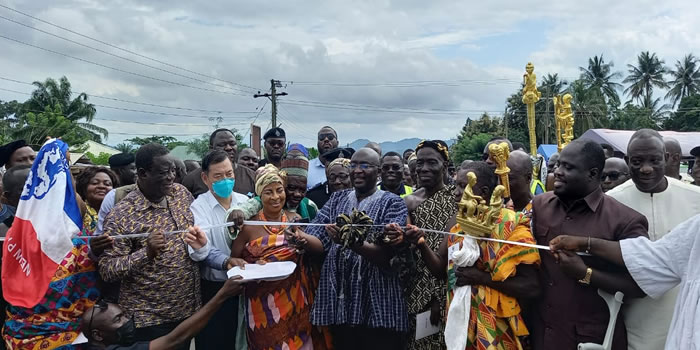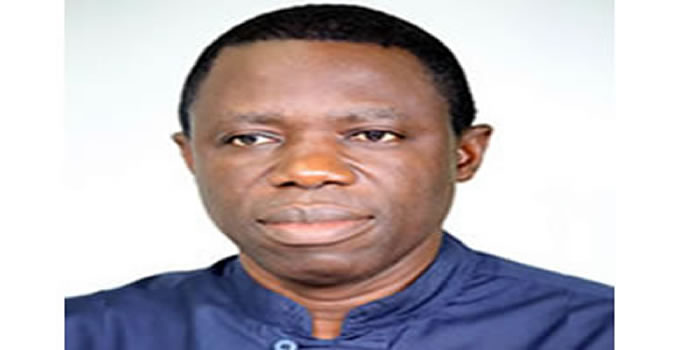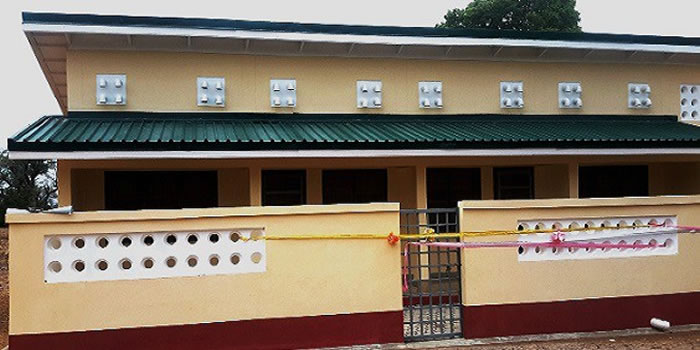

PRIORITISATION OF DEVELOPMENT ISSUES
Issues emanating from the situational analysis and profiling has been further prioritized in order of their urgency and importance by taking into consideration the following issues:
• impact on a large proportion of the citizens especially,
• the poor and vulnerable;
• significant linkage effect on meeting basic human needs/rights,
• reduction of gender discrimination linked to sustainable development,
• significant multiplier effect on the local economy – attraction of enterprises,
• job creation,
• increases in incomes and growth,
• impact on even development,
• issues relating to spatial location of investment and activities with the aim of either reducing or bridging the rural-urban disparities/gaps in relation to access to public goods and services or with respect to ecological zones in pursuance of growth and poverty reduction objectives,
• cross-cutting issues such as HIV and AIDS,
• gender equality,
• environmental concerns,
• climate change issues,
• population issues,
• Green Economy
POTENTIALS, OPPORTUNITIES, CONSTRAINTS AND CHALLENGES (POCC)
The key development issues identified need to be addressed within the period. In doing this, there is the need to identify the potentials, opportunities, constraints and challenges that surround these development issues. Indeed when these are combined and harnessed properly, one would be seen to be making contributions towards making good the identified issues. Again, this will constitute the basis for developing the development objectives for the District within the period 2014-2017.
The key development issues or problems identified to form the basis of the District development objectives are summarized in the matrices below:
THEMATIC AREA: HUMAN DEVELOPMENT, PRODUCTIVITY AND EMPLOYMENT
DEVELOPMENT GOALS, OBJECTIVES AND STRATEGIES
INTRODUCTION:
The Medium Term Development Plan 2014 – 2017 (MTDP 2014 – 2017) for the Jasikan District Assembly is formulated within the National Medium Term Development Policy Framework 2014 – 2017. This represents comprehensive policies to support growth and poverty reduction over the next four years. It is informed by the conviction of the current government that the economy of Ghana needs to be managed effectively to enable wealth and job creation for the benefit of all Ghanaians.
The main goal of the 2014 – 2017 Medium Term Development Policy Framework is to address the economic imbalance, re-stabilize the economy and place it on a path of sustained accelerated Ghana Shared Growth and Development Agenda(GSGDA II) towards achieving the Millennium Development Goals (MDG’s) and also to attain the status of a middle income country by 2017.
The District Development goals and focus are derived from the national goal since the purpose is the same for all Ghanaians.
DISTRICT DEVELOPMENT GOAL:
At a stakeholder meeting with Assembly persons, public servants, Heads of Department, Traditional Authority representatives, NGO’s etc the district development goal was formulated as follows:
“TO ADDRESS THE SOCIO-ECONOMIC IMBALANCES, MOBILIZE ALL AVAILABLE RESOURCES AND ENGAGE IN VIABLE VENTURES GEARED TOWARDS INCOME GENERATION AND POVERTY REDUCTION FOR THE ATTAINMENT OF THE MILLENNIUM DEVELOPMENT GOALS”
The essential ingredients or elements of the goal within the context of a rural district’s economy based mainly on agriculture are to:
2. Improve and modernized agriculture in a way to generate employment, and incomes
3. Mobilize and harness all natural resource management towards wealth creation and poverty reduction
4. Undertake income generating ventures that will improve the economic well being of the people
5. Attain the millennium development goals
The development framework represents the overall scope within which the development of the District would take place. It is prepared against the background of documented development problems and issues, potentials, opportunities, constraints and challenges.
The framework thus provides guidelines for the preparation of the plan proposal that will focus on the seven thematic areas:
• ENSURING AND SUSTAINING MACROECONOMIC STABILITY;
• ENHANCING COMPETITIVENESS IN GHANA’S PRIVATE SECTOR;
• ACCELERATED AGRICULTURAL MODERNISATION AND SUSTAINABLE NATURAL RESOURCE MANAGEMENT
• OIL AND GAS DEVELOPMENT;
• INFRASTRUCTURE AND HUMAN SETTLEMENTS DEVELOPMENT;
• HUMAN DEVELOPMENT, PRODUCTIVITY AND EMPLOYMENT;
• TRANSPARENT AND ACCOUNTABLE GOVERNANCE.
PROJECTIONS FOR 2014 – 2017:
The overall goal of the plan is to achieve a broad based improvement in the social and economic conditions of the people through the introduction and implementation of interventions that seek to change the fragile district economy and improve opportunities for employment, increase access to credit and capital to carry out small scale economic activities.
As a district with comparative advantage in agriculture, the plan focuses on directing the available resources into the area of agriculture in its bid to improve the district economy.
Again in the area of improving the well-being and welfare of the people, the 2014-2017 Medium Term Development Plan will focus on the provision and upgrading of social and economic infrastructure for human development in the areas of education, Water and Sanitation, Feeder Roads, Energy and Governance.
Projections for the Agric Sector:
The 2014-2017 projections for agriculture are made on the following assumptions:
• That the weather conditions will be good and favourable
• Disease and pest controls will be effective
• Extension staff of MOFA will support and provide the necessary technical and extension advice and back stopping to farmers
• That farmers will access small-scale credit to invest into farming
• That expected growth rate will be at least 5% per annum for all crops
NB: the task for the Agriculture Department is to undertake a census and establish the basis for increasing the level of the production of the above agricultural items to 5% by 2017.
If this is done and the projected 5% levels are attained, there will be:
1. Food security ;
2. Income and employment for the youth;
3. Processing and exportation of some of these ;
Items outside the district will bring income. (E.g. ginger).
Projections under Education Sector:
The schools mapping out exercise carried out in 2012 revealed that about 5,538 children of school going age were not in school for various reasons. Out of this number 2,554 (46.1%) were boys while 2,981 (53.9%) were girls.
The School Mapping exercise identified the following reasons why about 5,538 pupils of school going age were not in school:
1. Inability of parents to pay school fees and provide other logistics to their wards
2. High school fees, (at the time 2013);
3. Girls becoming pregnant after primary school;
4. Some parents were pessimistic that their children may not even find employment after school;
5. Teachers were not delivering to the expectation of parents.
6. Access to schools was difficult in some rural areas.
Solution:
The 2010 – 2013 Medium Term Plan identified interventions to stem the situation:
a) Capitation Grant
b) School Feeding Program
c) Strengthening of PTA’s SMC’s
d) Organization of School Performance and Appraisal Meetings
e) Strengthening of circuit supervision etc.
On the whole these interventions made a very significant impact to stem the problem and it is estimated at 45% achievement. What this means is that about 3,045 boys and girls of school going age are out of school in the district.
Now if we assume that 45% of these school failures are in the present Jasikan District, then it means about 1, 370 boys and girls of school going age are out of school because of the reasons adduced above by the School Mapping Exercise (2012).
Gaps Identified in School Distribution:
The School Mapping Exercise of 2012 identified gaps in the distribution and establishment of basic schools. The recommendation was that the gaps should be addressed in order to ensure equitable access to basic schools.
From the above table, the implication for the district is that we need to establish the following schools (gaps) in 2014 -2017.
1. Pre- schools = 16
2. Primary School = 1
If these schools are established and their complementary facilities and staff provided then the district can ensure equitable access to basic schools.
Health Sector Projections:
The following population thresholds are taken into consideration in making the projection for health facilities (2014-2017).
From the matrix above, it is evident that the health facilities in the district are sufficient and access is good. What needs to improve for efficient health services delivery is:
1. Quantity and quality of health personnel
2. Quantity of health infrastructure (buildings)
3. Staff accommodation
4. Facilities at the health post/centres
5. Equipment.
1. From the table and graph above, the information reveals a very high:
• Doctor/Patience (population ratio) = 1:66,000
• Nurse/population ratio = 1:1,535
The implication for the district as a result of these ratios is that the manpower situation at the health institutions is poor and needs very serious attention. We need to recruit, train and post more medical and paramedical staffs to the institutions in order to improve the health delivery system (2014-2017)
The immediate requirements are indicated below:
In addition to this core staffs, there is the need to beef up the strength of all the para-medical categories also – e. g. orderlies, watchmen and labourers etc. to support the core staff.
MONITORING AND EVALUATION ARRANGEMENTS
INSTITUTIONAL ARRANGEMENT
In order to ensure effective implementation of the plan, institutional, administrative and legal issues must be dealt with. These include role casting, procedures and structures. Specific role of the communities, NGOs and District Assembly involved in the implementation are indicated in the programme of action. For successful implementation the following capacity building arrangement must be put in place.
1. Establishment and resourcing of the departments provided under section 38 of the Local Government Act, 1993, (Act 462). Those institution need to be provided with the necessary logistics to facilitate management of the projects.
2. Resourcing the District Planning and Coordinating Unit (DPCU) established under section 46(3) of the local government Act, 1993 (Act462), and which is required to advise and provide secretariat for the District Assembly in the planning, programming, monitoring and evaluating and coordinating functions provided in section 7(1) of the National Development Planning (System) Act, 1994 (Act480).
3. Build capacity of Unit Committees and the Town and Area Council in the management of the development planning process on account of their very close contact with the local people.
4. Coordination of efforts of the NGOs and their integration into the development planning process.
5. It is important that the District Assembly collaborate with the traditional authorities to ensure the acceptance and successful implementation of the plan, in particular matters relating to land for community projects, organizing the people for communal labour (particularly in donor sponsored project like POP, SNV etc), financial contribution such as levies and taxes.
6. Periodic organization of forums to explain the extent of implementation regarding level of success and problems
MONITORING AND EVALUATION
The preparation of monitoring and evaluation plan is the responsibility of the DPCU. The DPCU is mandated to coordinate and collate data on the outputs. The DPCU is however required to provide an overall district level monitoring and evaluation of project. The Regional Coordinating Council will provide over all supervisory function in the district.
MONITORING REPORT
Monitoring is directed at ensuring that the progress of the project proceeds according to schedule, and that the quality of work provided achieves the desired specification and standard. The monitoring report will be prepared according to the following NDPC format.
PROGRAMME AND PROJECT MONITORING REPORT:
Quarterly and Annual Progress Reports Format
Title Page
• Name of the District
• Time of period for the M&E report
Introduction
• Summary of achievements and challenges with the implementation of the DMTDP
• Purpose of the M&E for the stated period
• Processes involved and difficulties encountered
M&E Activities Report
• Programme/project status for the quarter or year
• Update on finding sources and disbursements
• Update on Indicators & Targets
• Update on Critical Development and Poverty Issues
• Evaluations conducted; their findings and recommendations
• Participatory M&E undertaken and their results
The way forward
• Key issues addressed and those yet to be addressed
• Recommendations
EVALUATION REPORT
Ex-post facto evaluation should be conducted in order to ascertain whether the resources invested have produced or are producing the expected outputs and benefits and, whether the benefits are reaching the intended target population. The first ex-post facto evaluation should be conducted one year after completion of the project when the impact should be evident.
The proposed report should be prepared according to the following NDPC format.
PROGRAMME AND PROJECT EVALUATION REPOT.
Evaluation Report Format
1. Title page
2. Table of contents
3. Acknowledgements (optional)
4. Executive summary
• Summarize the intervention being evaluated, the purpose of the evaluation, the methods used, the major findings and the recommendations in a prioritised order
• Two to three pages (usually) that could be read independently without reference to the rest of the report
5. Introduction
• Identify programme or project description and background
• Describe the programme or project being evaluated (the setting and problem addressed, objective and strategies, funding)
• Summarize the evaluation context (purposes, sponsors, composition of the of the team, duration)
6. Evaluation objectives, Design and Scope
• List the evaluation objectives ( the questions the evaluation was designed to answer)
7. Methodology
• Describe fully the evaluation methods and instruments (e.g., what data were collected, specific methods used to gather and analyse the data, rationale for visiting selected sites, etc)
• Limitations of the evaluation
8. Findings
• State findings clearly with data presented graphically in tables and figures. Include effects of the findings on achievement of programme/project
• Explain the comparisons made to judge whether adequate progress was made
• Identify reasons for accomplishments and failures, especially continuing constraints
9. Recommendations
• List the recommendations for different kinds of users in priority order. Include costs of implementing them, when possible
• Separate recommendations into short term and long term
• Link recommendations explicitly with the findings, discussing their implication for decision-makers
• Include a proposed timetable for implementing/reviewing recommendations
10. Lessons learned
• Identify lessons learned from this evaluation for those planning, implementing or evaluating similar activities
11. Appendices
• Terms of reference
• Instruments used to collect data/information (copies of questionnaires, surveys, etc.)
• List of persons interviewed and sites visited
• Data collection instruments
• Case studies
• Abbreviations
• Any related literature
• Other data/tables not included in the findings chapter
Date Created : 11/21/2017 2:35:23 AM










 facebook
facebook
 twitter
twitter
 Youtube
Youtube
 +233 593 831 280
+233 593 831 280 0800 430 430
0800 430 430 GPS: GE-231-4383
GPS: GE-231-4383 info@ghanadistricts.com
info@ghanadistricts.com Box GP1044, Accra, Ghana
Box GP1044, Accra, Ghana